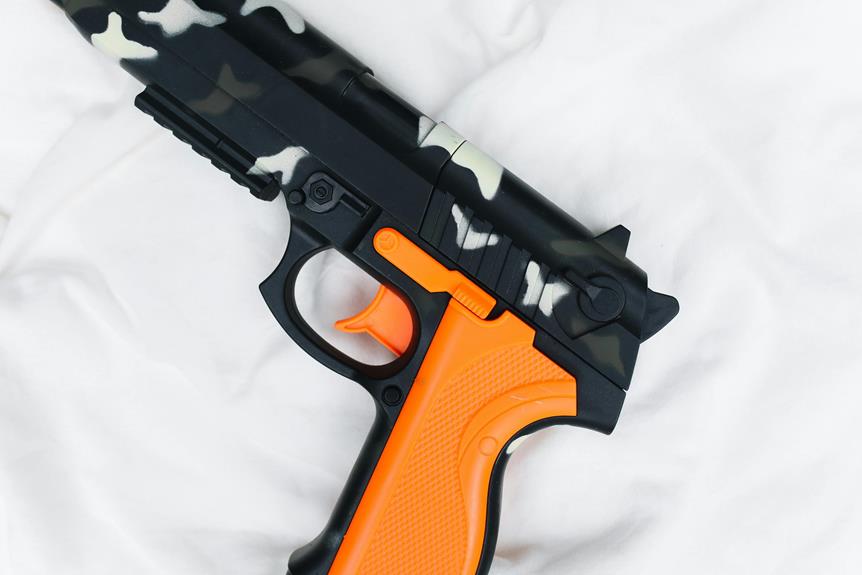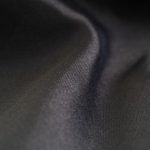When you're looking to protect your fabrics, using Scotchgard can be a practical solution. First, you need to understand the benefits it offers and how to properly prepare your materials for application. It's crucial to follow the right techniques to ensure maximum effectiveness, and maintaining that protective barrier afterward is equally important. If you're unsure about the best practices or which product suits your needs, you'll want to stick around, as there are essential tips that can make all the difference in preserving the quality of your fabrics.
Table of Contents
Key Takeaways
- Clean fabrics thoroughly and allow them to dry completely before applying Scotchgard for optimal protection.
- Apply Scotchgard in a well-ventilated area, holding the can 6-8 inches from the fabric for even coverage.
- Use several light coats, allowing 30 minutes of drying time between each coat for effective barrier formation.
- Regularly vacuum treated fabrics and spot clean stains promptly to maintain the protective layer.
Understanding Scotchgard Benefits
Scotchgard offers powerful protection for your fabrics, making stains and spills easier to clean up. When you treat your upholstery or clothing with Scotchgard, you're creating a barrier that repels liquids and prevents dirt from settling in. This means everyday messes, like coffee spills or muddy footprints, won't leave a lasting mark. You'll find it's much simpler to maintain the appearance of your fabrics.
One of the key benefits of Scotchgard is its versatility. It's effective on a wide range of materials, from carpets and curtains to outdoor furniture. You don't have to worry about whether it's suitable for your specific fabric type. Just follow the instructions, and you'll enhance the durability of your belongings.
Additionally, Scotchgard helps preserve the original color and texture of your fabrics. Over time, exposure to spills and dirt can lead to fading and wear. By applying Scotchgard, you're not just cleaning; you're safeguarding your investment. This proactive approach can save you money by extending the life of your fabrics and reducing the frequency of deep cleaning.
With Scotchgard, you'll enjoy a cleaner, fresher living space with less effort.
Preparing Your Fabrics
Before applying Scotchgard, it's essential to clean your fabrics thoroughly to ensure the protective barrier adheres properly. Start by checking the care label for any specific cleaning instructions. If the fabric is machine washable, use a gentle detergent and the appropriate settings. For non-washable items, such as upholstery or delicate fabrics, consider spot cleaning or using a professional cleaning service.
Once your fabrics are clean, allow them to dry completely. Moisture can prevent Scotchgard from forming an effective barrier, so this step is crucial. If you're working with larger pieces like furniture, ensure that you have enough space to maneuver around them freely.
Next, inspect your fabrics for any stains or damage that may need addressing before applying the Scotchgard. Treat any stains with an appropriate stain remover, and make sure to let it dry before proceeding. Additionally, ensure the area where you'll be applying Scotchgard is well-ventilated, as this will help in both the application process and drying time.
Taking these steps to prepare your fabrics will enhance the effectiveness of Scotchgard and help keep your items looking great for longer.
Application Techniques
With your fabrics clean and dry, you can now focus on applying Scotchgard to create a protective barrier against stains and spills.
Start by choosing a well-ventilated area to work in, as the spray can have strong fumes. Shake the can thoroughly to ensure the product is mixed well.
Hold the can about six to eight inches away from the fabric surface. This distance helps you achieve an even application without saturating the material. Spray in a sweeping motion, covering the entire surface without over-saturating any area. It's better to apply several light coats than one heavy coat. Allow each coat to dry for about 30 minutes before applying the next one.
For best results, apply at least two to three coats, especially on high-use items like upholstery or outdoor fabrics. Be sure to check the manufacturer's instructions for specific timing and recommendations.
After you've finished the application, let the fabric cure for at least 24 hours before using it. This ensures the Scotchgard bonds properly with the fibers, providing optimal protection.
Follow these steps, and you'll keep your fabrics looking fresh and clean for longer!
Maintenance After Treatment
To keep your fabrics protected and looking their best, regular maintenance is essential after treatment.
After applying Scotchgard, you'll want to be proactive in caring for your fabrics to ensure they remain stain-resistant and vibrant. Here are a few key maintenance tips to follow:
- Vacuum regularly: Remove dust and debris that can wear down the protective layer over time. Use a vacuum with an upholstery attachment for best results.
- Spot clean stains immediately: If spills occur, tackle them right away with a damp cloth and mild soap. Avoid harsh chemicals that might degrade the Scotchgard treatment.
Choosing the Right Scotchgard Product
After ensuring your fabrics are well-maintained, it's important to select the right Scotchgard product tailored to your specific needs.
Start by considering the type of fabric you're treating. Scotchgard offers products specifically designed for upholstery, carpets, and even clothing. Each product is formulated to address the unique characteristics and challenges of various materials.
Next, think about the level of protection you need. If your fabric sees heavy use or is exposed to spills frequently, choose a product with enhanced stain resistance. For lighter-duty applications, a standard fabric protector might suffice.
Don't forget to check for compatibility. Some Scotchgard products aren't suitable for use on certain materials, so always read the label carefully.
Additionally, consider whether you want a spray-on or a foam application. Sprays are great for even coverage, while foams can be better for targeted areas.
Frequently Asked Questions
Can I Use Scotchgard on Outdoor Fabrics?
Yes, you can use Scotchgard on outdoor fabrics. It helps repel water and stains, extending the life of your cushions, umbrellas, and other outdoor items. Just make sure to follow the application instructions for best results.
How Long Does Scotchgard Protection Last?
Scotchgard protection typically lasts three to five years, depending on factors like fabric type and exposure to elements. You should reapply it periodically to maintain optimal protection and keep your fabrics looking great.
Is Scotchgard Safe for Pets and Children?
Scotchgard is generally safe for pets and children once it's fully dried. However, it's best to keep them away during application. Always check product labels for specific safety instructions to ensure everyone's well-being.
Can Scotchgard Be Removed From Fabrics?
Yes, you can remove Scotchgard from fabrics, but it's a challenging process. You'll likely need a solvent or specialized product, and some fabrics may be damaged in the removal process, so proceed with caution.
Does Scotchgard Change the Color of Fabrics?
Scotchgard generally doesn't change the color of fabrics if applied correctly. However, it's smart to test it on a small, inconspicuous area first, just to ensure you're happy with the results before applying it widely.
- How Does Ring Spun Cotton Affect Garment Fit and Shape Retention? - August 13, 2024
- What Are the Challenges in Producing Ring Spun Cotton? - August 13, 2024
- Is Ring Spun Cotton Suitable for Plus-Size Clothing? - August 13, 2024







